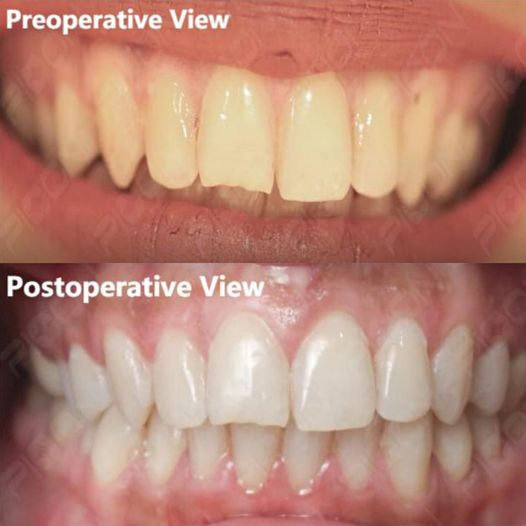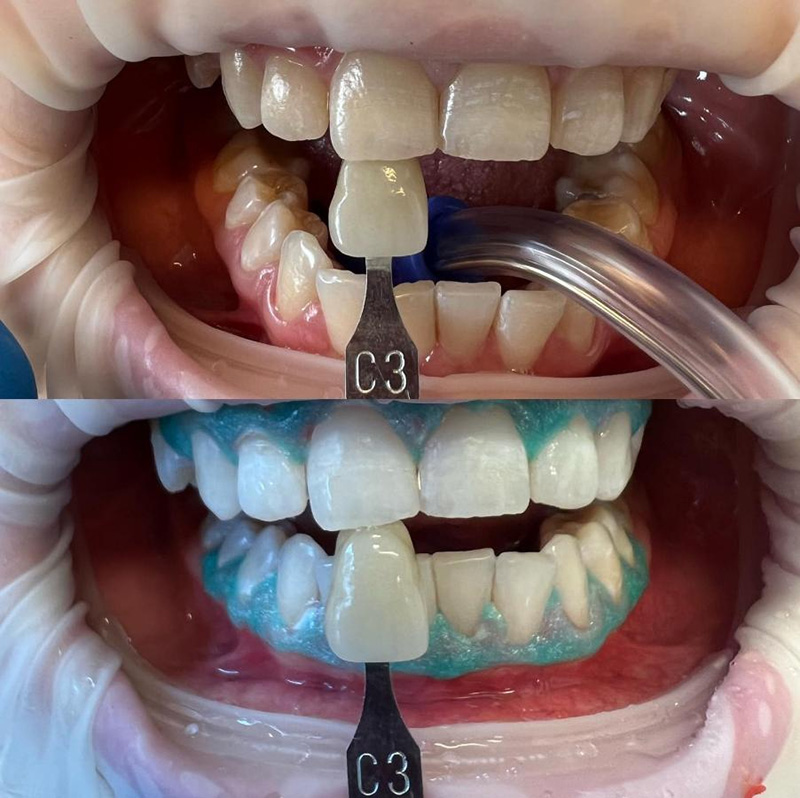Treatment of Laser Teeth Whitening
Diode laser teeth whitening has emerged as an innovative and effective solution for achieving a brighter, more radiant smile. This advanced dental technology harnesses the power of light energy to gently and safely whiten teeth, providing a convenient and long-lasting alternative to traditional whitening methods. In this article, we will explore the underlying principles, the advantages of diode laser whitening, the step-by-step process, and important considerations to ensure a successful and comfortable treatment experience.
Principles of Laser Teeth Whitening
-
Laser teeth whitening employs laser energy to accelerate the breakdown of whitening agents (typically hydrogen peroxide), thereby enhancing their bleaching effect. The principles are as follows:
-
Photothermal Effect:
The high energy from the laser rapidly increases the temperature of the whitening agent, accelerating the decomposition of hydrogen peroxide. This releases more active oxygen atoms, which quickly oxidize and break down the pigment molecules on the tooth surface.
-
Photocatalytic Effect:
Certain lasers interact with photocatalysts added to the whitening agent, further increasing the agent's activity. These photocatalysts can be excited by specific wavelengths of laser light, speeding up the chemical reactions of the whitening agent.
-
Photochemical Effect:
The laser directly interacts with pigment molecules within the teeth, causing them to decompose and bleach. For instance, KTP lasers (532 nm) and argon lasers (488 nm and 514.5 nm) are believed to cause direct photochemical reactions with the pigments in the dentin, achieving whitening effects.
Operation process
preparation:
Click the intraoral picture of the patient.
Take the shade.
Use Bleaching Cheek Retractor. (the one that has lip and tongue retractor to it) Keep your laser ready.
Specific operations
-
Firstly, we apply the gingival barrier. We should carefully cover all the marginal gingival of the teeth to be bleached without any space or chance for spillage of bleaching agent onto the gingiva. And then we cure the gingival barrier.
-
Secondly, we apply a bleaching agent on all the teeth to be bleached. As the laser light needs chromophore to get absorbed, this bleaching agent will act as chromophore and absorbs the laser light and after which the reaction inside the gel will be accelerated.
Thirdly, use the laser bleaching handpiece on each quadrant for 1 minute. And then wait for 5 minutes.
Finally, remove the bleaching agent and then wash and take off the retractor.


Advantages of Laser Teeth Whitening
-
Efficiency and Speed:
Laser teeth whitening significantly reduces the whitening time as the laser rapidly enhances the activity of the whitening agent, producing noticeable results in a short period.
-
Effective Results:
Because the laser can penetrate deeply into the teeth and directly interact with pigment molecules, the whitening effect is typically more pronounced and long-lasting compared to traditional methods.
-
Temperature Control:
During the whitening process, the temperature of the whitening agent can be precisely controlled, preventing overheating and minimizing discomfort and side effects.
-
Reduced Sensitivity:
Certain wavelengths of laser, such as near-infrared lasers, can reduce inflammatory responses in the pulp tissue during whitening, thereby alleviating post-whitening tooth sensitivity.
Precautions
-
Concentration of Whitening Agent:
Care should be taken when using high concentrations of hydrogen peroxide (35% or higher), as high concentrations under laser exposure may cause tooth sensitivity and pulp overheating.
-
Selection of Laser Wavelength:
Not all laser wavelengths are suitable for teeth whitening. Some wavelengths (e.g., Nd and CO2 lasers) may cause tooth overheating or surface damage. Therefore, appropriate laser types, such as KTP and argon lasers, should be chosen.
-
Treatment Frequency and Interval:
Laser whitening should not be performed too frequently. Adequate intervals between treatments are necessary to avoid excessive stimulation of the teeth and gums.
-
Individual Differences:
Responses to laser whitening vary among individuals. Some may experience temporary tooth sensitivity or gum irritation. Treatment should be adjusted and appropriate care taken based on personal conditions.



